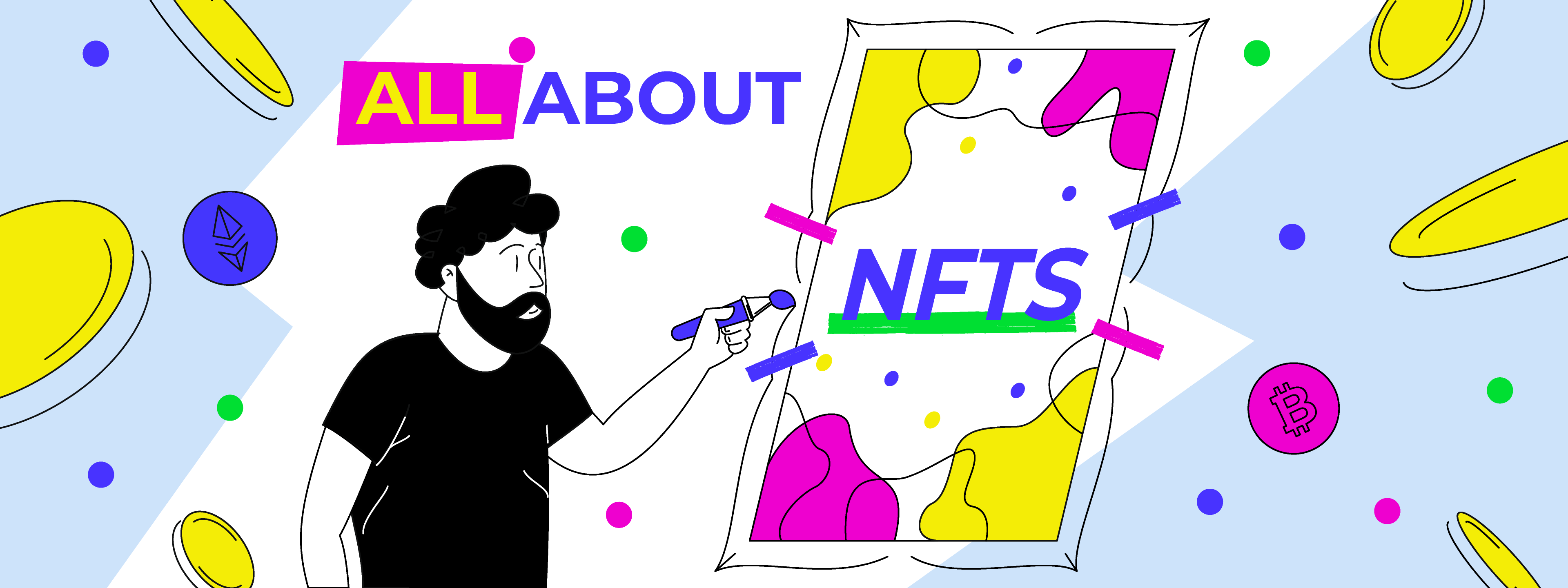
Embracing Change: HR in the World of Digital Assets
Hotcoin’s HR shares her journey from traditional industries to the world of Web3 and crypto, highlighting key insights on thriving in this space.
Read
Non-fungible tokens, or NFTs, are special, unique or limited-edition tokens that can be used to represent collectible items such as art, in-game objects, and digital trading cards – opening up intriguing new use cases and thriving new markets.
Digital tokens have proven to be one of the major use cases for blockchains. These tokens are easy to launch on most smart contract blockchains, are built around established standards (for example, Ethereum uses a popular standard known as ERC20), and can be used for a very wide range of purposes. When any new project launches on Ethereum, there’s a good chance it uses an ERC20 token. These tokens can be sold, air-dropped or otherwise distributed to a large number of users.
Essentially, a blockchain token proves ownership in some form. That might be a share in the governance for a DeFi initiative, like UNI, COMP or MKR tokens. It might represent a physical or digital asset like gold (DGD) or Bitcoin (WBTC). It could be a real-world asset like real estate or shares. It could even be a right to a future token – a kind of placeholder that will be swapped for another asset, perhaps when a new blockchain is launched.
In all of these examples, tokens are typically minted in large quantities. They can be transferred and traded freely, are highly divisible, and are fungible: any single token is treated exactly the same as any other. (One WBTC token, for example, is worth the same as another, can be divided into 100 million Satoshis, and there can be up to 21 million WBTC.)
But what happens if you want a unique token that represents a single item, like a piece of artwork? That’s where NFTs come in.
Fungibility is a core feature of money, and all regular blockchain tokens. Every $10 bill is treated the same way – one $10 bill is no more or less valuable than another. They are completely interchangeable. Similarly, all TIME tokens are the same. Their ownership is handled by the standard ERC20 contract. When TIME was created, a supply of 710,113 was specified.
But it’s equally possible to create a token with a very limited supply – perhaps 100 tokens, or even a supply of precisely one. Moreover, it’s possible to create that token to be indivisible. While you can send someone 0.01 or 0.00000001 TIME, you can’t send someone a fraction of your new token. You can only send a whole number of tokens.
Such a token is known as a ‘Non-Fungible Token’, or NFT. NFTs are typically unique, or very limited in supply, and they cannot be divided. On Ethereum, NFTs are handled by the ERC721 token contract.
NFTs are important because they can be used to designate ownership, just like regular blockchain tokens. But the difference is that, as unique tokens, they can be used to prove ownership of unique items, whether those items exist in the digital or physical world.
One of the major use cases for NFTs has been digital art. An artist creates a digital image, and a hash (a unique cryptographic fingerprint) of the image is linked to a single NFT. Alternatively, a limited-edition run can be created in the same way. Because an NFT exists on the blockchain, it is impossible to forge one, and it’s always clear who created the artwork associated with it. While the original artwork can be copied by anyone, the token designating ownership cannot: the provenance or transfer history of an image is recorded permanently on the blockchain.
There are lots of other use cases for NFTs. They can be used to represent ownership of other collectibles, with the popular CryptoKitties being one of the first major examples. Valuable in-game inventory items, skins and trophies can also be represented by NFTs, making them easier and more secure to trade. In the real world, it’s possible to link all kinds of assets to non-fungible tokens, from individual properties to classic cars, paintings, and even invoices and trade receivables.
Why do NFTs have value?
NFTs have value for the same reason that a share certificate or property deed has value. The token is a means of recording ownership of something else. While the certificate (token) points to something beyond itself, that token can be traded and has value because it signifies ownership of something valuable.
Because NFTs exist on the blockchain, they offer transparency, auditability and fraud resistance that conventional paper certificates cannot. In fact, while it’s possible to forge artworks – even by the most famous artists – it is essentially impossible to forge an NFT and claim that a fake image was created by a known artist. Only the person who has the private key to the issuing account can create a legitimate NFT for that artist.
NFTs are an absolutely revolutionary breakthrough because they enable a number of use cases that were previously impossible, or very inefficient. Some examples include:
NFTs have captured the imagination precisely because they’re so powerful. They enable digital creators to tokenise their works and for investors to access markets that were previously the preserve of the very wealthy, or very well-connected. NFTs democratise investment in art and collectibles, making the process easy and accessible enough for anyone to get involved in.
While NFTs are still a relatively small sector of the blockchain space, they are growing in importance and value. It’s possible to buy collectible items for just a few dollars. Equally, some of the most valuable items sell for sums that would not be out of place in a major auction house.
Some of the highest-priced NFTs of recent times include:
According to NFT site Nonfungible.com, all-time NFT sales total more than $350 million. Digital art accounts for almost $100 million of that.
There are various ways in which digital artists can use NFTs to monetise their work. Of course, simply creating an NFT for a piece of art doesn’t itself make it valuable, so if you’re an unknown artist you shouldn’t expect this to catapult you to fame. However, NFTs do give you a means of building a reputation and track record in the space.
NFTs can be used to represent ownership of one-off artworks, or limited-edition series. They can also be used to create reward tokens to reflect participation in an event or simply as a ‘thank you’ to your supporters.
There are many platforms that allow you to create and manage NFTs. Some of the leading digital art trading sites build broader functionality into their tokens. For example, smart contracts can ensure that the artist receives a proportion of revenues from future sales, not just the original sale or auction. Another platform, Async, enables users to create programmable digital art using NFTs. Other services specialise in creating certain kinds of art, or providing advanced functionality, like bundling NFTs, batch creation, or including unlockable digital content.
There are lots of marketplaces where you can create, buy and sell digital art. Some of the leading options include:
LaborX now includes an NFT category for its Gigs marketplace as well, and we are looking forward to more NFT integrations coming. If you’re interested in providing or purchasing NFT services, check out https://laborx.com/gigs/nft
Hotcoin’s HR shares her journey from traditional industries to the world of Web3 and crypto, highlighting key insights on thriving in this space.
Read
Discover how Web3 is reshaping HR practices with insights from a leading expert in the field.
Read
Discover Base's innovative L2 solution addressing scalability, security, and user experience challenges in crypto. Learn about Base Incubator by LaborX, fostering growth and innovation within the Base ecosystem.
Read